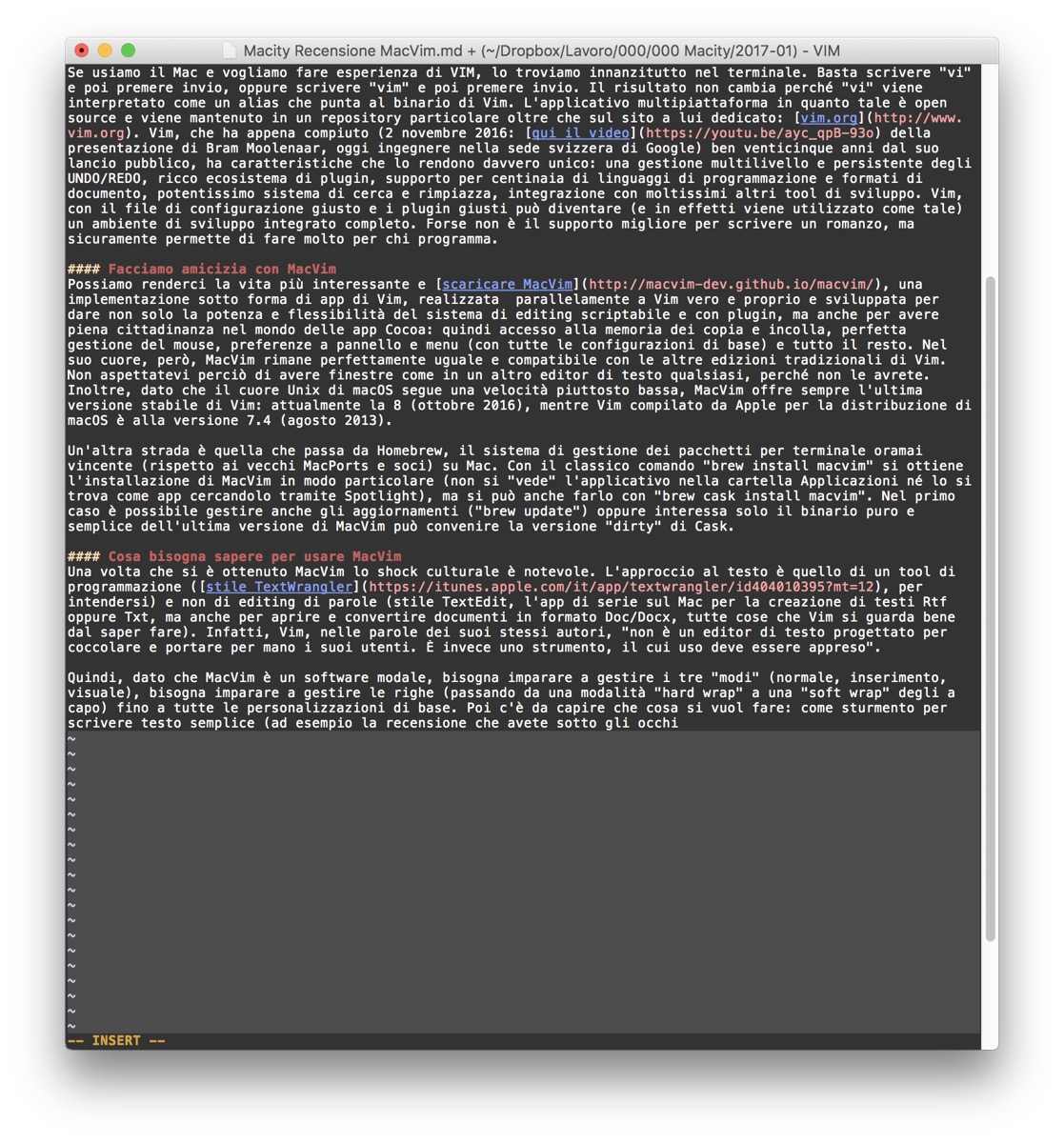
- HOW COME MY MACVIM .VIM IS EMPTY HOW TO
- HOW COME MY MACVIM .VIM IS EMPTY INSTALL
- HOW COME MY MACVIM .VIM IS EMPTY MANUAL
- HOW COME MY MACVIM .VIM IS EMPTY MAC
There are a bunch of tools to make it easier like CSApprox and others. You'll need to convert them to 256 colors for use in CLI Vim. The "best" colorschemes are often designed specifically for GUI Vim which is able to display thousands of colors. The configuration settings may vary from terminal to terminal, though, but a quick google for vim 256 colors will give you all the info you need. There is a big chance that the correct $TERM ( xterm-256color) is not set by default. On Linux all the default terminal emulators support 256 colors. Just use a terminal emulator capable of displaying 256 colors and a suitable colorscheme. Another advantage for me is I get to use the same terminal emulator on both OS X and Linux. But I have yet to find anything for OS X that even comes close to being as good as konsole.
HOW COME MY MACVIM .VIM IS EMPTY INSTALL
I would rather not have to install KDE on OS X to run a terminal emulator. I prefer konsole and install it via macports. For me I've found this criteria narrows it down to gnome-terminal and konsole(KDE's terminal). The answer is to use a terminal emulator that is fast, mature, and built to live in. I tried several terminal emulators for OS X, and had found them all, except two, to be sub-par for development with Vim. I've tried iTerm, but found it wasn't good enough. I've noticed the default Terminal on Lion is much faster than the previous version. Most terminals (or all terminals?) on OS X are slow.

My primary OS is Linux, but I've done development, in Vim through a terminal, on OS X as well. I've gone through this, and solved it, about two years ago. This is easily remedied by downloading and installing a fork of this plugin by another developer. s:SetNamedColor('#40E0D0','Turquoise') call, it takes awhile. Because it's implemented with a loop scanning all 255 colors for the closest match, and repeated ~150 times, once per e.g.

For 256-color terminals, however, the s:Xterm2rgb function is required for converting RGB values to appropriate color codes. Since mvim can handle direct hex values for colors, no translation is needed and everything loads quickly. This only applies to 256-color terminal vim, not mvim or presumably gvim. Here is a quote for a github issue about this problem. It turns out that my slow vim was due to a plugin called: vim-css-color. Going back to macvim with the same setup it opens files blazing fast.Īs you guys can see it's not just a few milliseconds we're talking here. nf (could it be tmux that's causing it?). Is this a common issue? Do I need to post my. So much so that I'm holding off on finishing my workflow video because it's so damn annoying. When I open a file in terminal vim, not matter the size, there's a very noticeable pause. In fact it's identical to MacVim (to those that think you can't get a beautiful color scheme/syntax on terminal vim, you're dead wrong).īut. I love the new workflow, and I have my vim set up exactly how I want it. We are all human and vim is that cool.Īs most of you know, and helped me out with, I recently switched my workflow from MacVim to iTerm2/tmux/vim.
And please those of you who deign to grace us with your vim wisdom - be kind.
HOW COME MY MACVIM .VIM IS EMPTY HOW TO
HOW COME MY MACVIM .VIM IS EMPTY MAC

HOW COME MY MACVIM .VIM IS EMPTY MANUAL


 0 kommentar(er)
0 kommentar(er)
